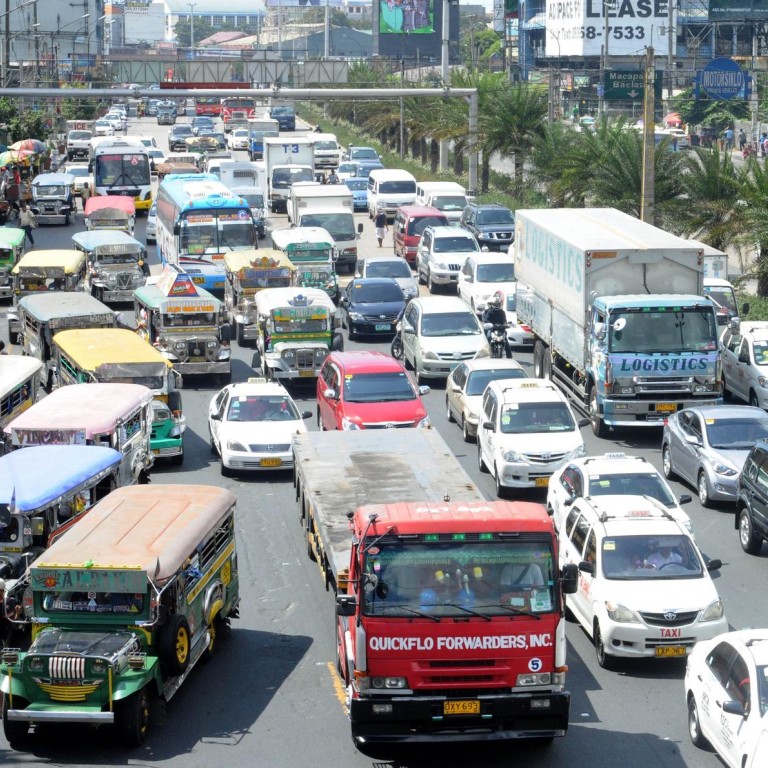
Two monster transport projects in Manila spell misery for commuters
Two monster transport projects in Manila slow traffic to a crawl and spell misery for workers
Until last week it took Leila, a project supervisor for the Manila office of a global law firm, 30 minutes to travel the 10 kilometres from her house to work.
Starting last Monday, the time taken by the cab journey was tripled to one-and-a-half hours.

Traffic in the capital, already bad enough, became worse this week with the government's simultaneous launch of two huge infrastructure projects in the city, with 13 more to follow. They include an expressway from the airport and a skyway that crosses the city. The national government is cramming the jobs together in the hope of finishing them before President Benigno Aquino steps down in 2016.
Officials warned the traffic may be snarled up for four years.
Joey Ramirez, a financial adviser who drives to meet clients, said: "It's hard to believe the traffic could be any worse … It might have been better to do the projects one at a time."
To cushion the impact, officials said they were studying reopening a river ferry service that went bankrupt a few years go.
They are even considering restricting school and work to four days each week. And next Tuesday's commemoration of the iconic 1986 People Power revolution will be relocated for the first time to Malacañang Palace so as not to add to the traffic.
The first two projects have already shut down some lanes of major avenues, reducing vehicle speeds to that of a brisk walk.
Cecilia M, an assistant manager at a multinational company, said she now has to leave her house at 6am if she wants to arrive by 8am at her office in Makati City, 16 kilometres away.
If she leaves at 7am she arrives at 11am. The trip back has her leaving the office at 6.30pm and arriving home at 9pm.
Exactly who will benefit from the construction isn't clear. The skyway will be a tollway open only to those who can afford the steep rates.
The airport expressway will lead directly to a casino complex where Macau magnate Stanley Ho Hung-sun's son Lawrence Ho Yau-Lung is building a hotel.
According to the Metro Manila Development Authority, the capital has a daytime population of 15 million, but only 12 million at night, indicating that at least three million people are on the move on the roads.
Only a fraction of the population actually drive - the rest suffer in dilapidated, poorly regulated public transport from tricycles to taxis, up to jeepneys and buses.
The city has a cheap elevated rail network, but it is not very extensive and always packed.
At rush hour, queues of passengers stretch from the platform down to ground level and out into side streets. Metro Manila's traffic has long defied efforts at mastery. Its 17 local government units issue their own traffic tickets. Government agencies have overlapping jurisdictions.
Public transport regulation is riddled with corruption.
Commuters also face hazards probably not found in other cities. A bus might fall on them, as happened recently when one flew off a flyover. Or a balcony blown off an exploding condominium might send a concrete slab crashing into cars.
The city's inhabitants got little warning about the impending chaos, dubbed "traffic armageddon" online. Instead, a few days before the projects started, officials warned that traffic might move at a glacial 1 to 9km/h.
One construction sign said: "Sorry for the inconvenience."

